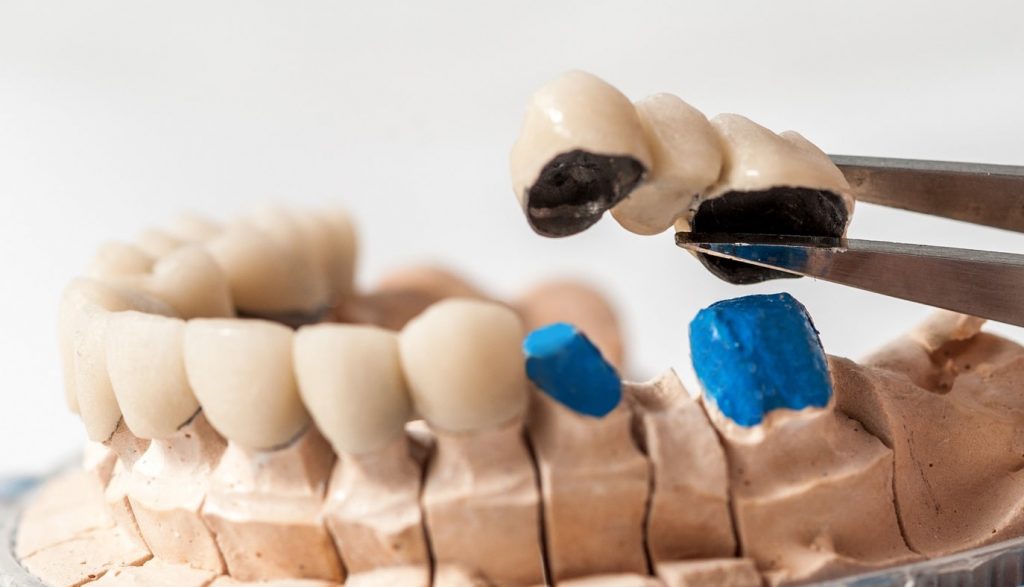Dental Bridges
Dental bridges are so named because they form a bridge over the gap that is created by one or more missing teeth. Restorative dental procedures, such as dental bridges, are important where tooth loss has occurred as they help to restore your smile, enable you to chew and speak properly, maintain the natural shape of your face, properly distribute the bite forces in your mouth by replacing the missing teeth, and prevent the other teeth from drifting out of position to fill the gap. There are many reasons why your dentist may recommend a dental bridge. In some cases, they are even an appropriate alternative to dental implants.

Creating a Dental Bridge
A dental bridge consists of two or more crowns placed on the teeth to the side of the gap and a false tooth or teeth between them. The supporting teeth are called the abutment teeth and the false tooth or teeth are called pontics. Depending on the situation and the patient’s preferences, pontics can be made from gold, alloys, porcelain or some combination of these. The abutment teeth can be natural or implant teeth, but either way it is their strength that enables the firm support of the dental bridge.
There are several types of dental bridges, appropriate for different situations. Following are three of the more common types of dental bridges:
- Traditional dental bridge. This is the most common type of dental bridge, made up of crowns on abutment teeth and a pontic in between them. Traditional dental bridges are usually made of porcelain fused to metal or ceramics.
- Cantilever dental bridge. This dental bridge is used when there are only abutment teeth to one side of the gap. However, it is not used very often as it does not allow for a more even distribution of bite forces, especially when used in the back of the mouth.
- Maryland bonded dental bridge. Also called resin-bonded bridges, the Maryland dental bridge is made of porcelain, porcelain fused to metal or even plastic teeth and gums that are supported by metal or porcelain framework. This dental bridge normally has metal or porcelain wings that are bonded to abutment teeth.
The creation and installation of dental bridges normally require at least two visits to the dentist’s office. During the first visit, the abutment teeth are prepared for receiving crowns and a dental impression is made. Abutment teeth preparation involves some enamel removal and recontouring in order to make room for the crowns that need to be placed over them. Once the abutment teeth are prepared, dental impressions can be made for the dental lab. During the time it takes for the dental lab to create the dental bridge, normally a couple weeks, a temporary bridge is worn to protect one’s teeth and gums.
During the second visit, the temporary bridge is removed and the permanent bridge is installed. The dentist will check the fit of the bridge, making minor adjustments as needed to ensure comfort and proper bite. The customization of the bridge is helpful in ensuring that it will fit as well and comfortably as possible, but it still may be necessary to return to the dentist over the coming months in order to make minor adjustments to the metal framework and bite. In some cases, the dentist may even use temporary cement to secure the bridge for a few weeks until they are sure the fit is good, at which point they will permanently cement the bridge in place.
Adjusting to a Dental Bridge
While it can take a little time to get used to a dental bridge, it can make chewing and speaking easier than it was without the bridge. A dental should be cared for in the same way that one cares for their natural teeth–with twice daily brushing, once daily flossing and twice annual dental cleanings. Any problems with the dental bridge should be immediately brought to the dentist’s attention so it can be rectified. Properly made, installed and cared for, a dental bridge can last for anywhere from five to fifteen years.
For more information about dental bridges and whether they may be right for you, contact Dr. Nurminsky today.

